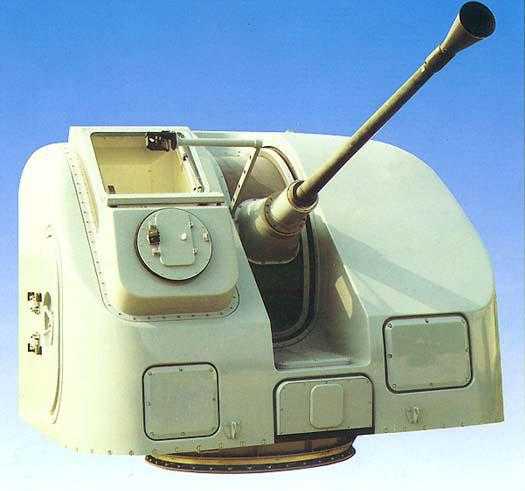|
The "Compact" twin mount has been superseded by the newer "Fast Forty" which is available in both single and twin mountings. These guns are much faster reacting than the World War II era Bofors 40 mm/56, but perhaps their greatest feature, at least when used in the anti-missile mode, is their higher accuracy. Breda claims that a twin Fast Forty, firing 900 rounds per minute, can kill an incoming supersonic missile flying in a straight line at ranges as great as 3,280 yards (3,000 m). The mount automatically switches from the lighter HE round to the heavier APFSDS when the missile reaches a range of 1,100 yards (1,000 m). |

Single Fast Forty Multipurpose Naval Mounting
|
| .
|